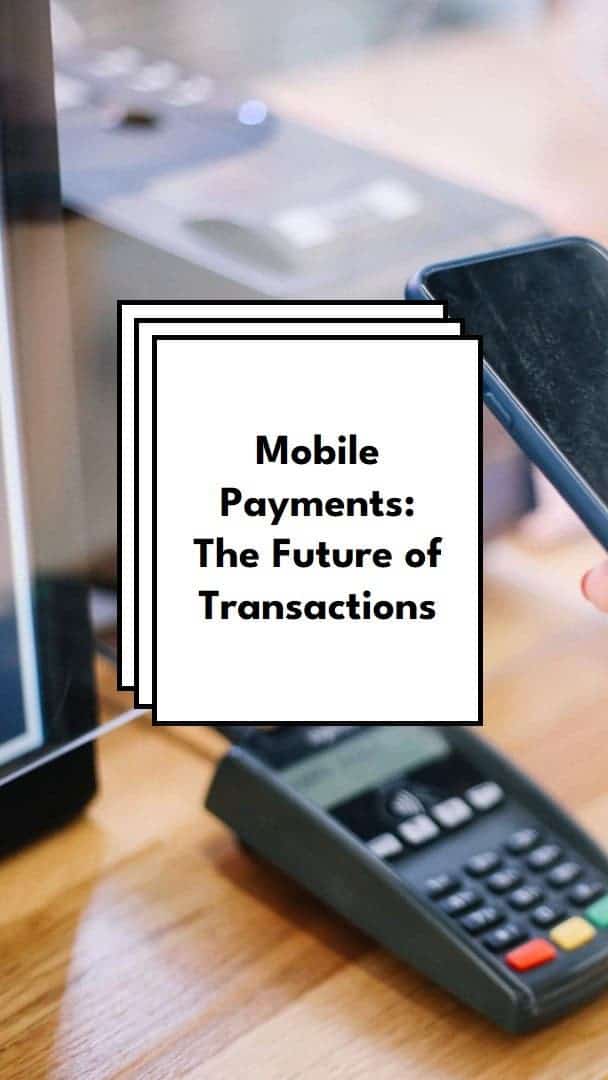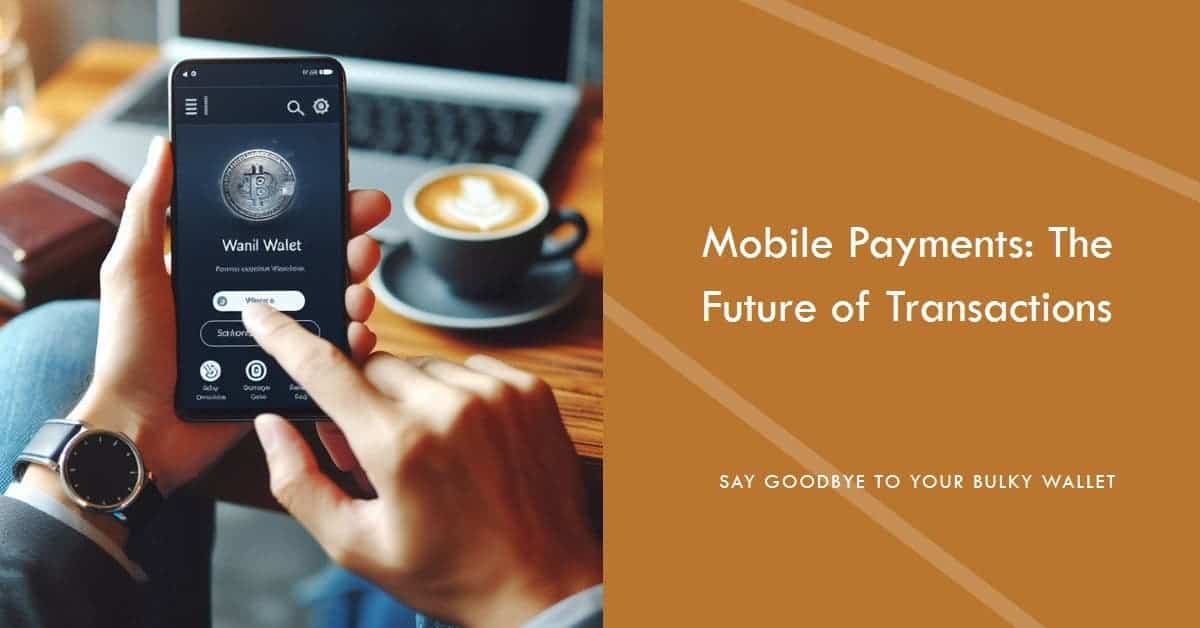The days of rummaging through a messy wallet, searching for the right card, seem to be fading. Mobile wallets and contactless payments are rapidly transforming the way we process transactions. But can your smartphone really become a full-fledged replacement for your traditional wallet? Let’s dive into the world of digital wallets, exploring their benefits, security considerations, and the potential downsides of ditching your physical wallet.
Can your smartphone replace your bulky wallet? A look at the rise of mobile payments
The rise of the digital wallet
Mobile wallets, essentially digital versions of physical wallets, store your payment information securely on your smartphone. With a touch, scan or security code, you can make contactless payments in shops, on public transport and even for online purchases. Popular options include Apple Pay, Google Pay, and Samsung Pay, each with its own set of features and compatibility.
The convenience factor is undeniable. Carrying one device eliminates the need for multiple cards, reducing the risk of loss or theft. Transactions are often faster, especially compared to swiping or dropping cards. Additionally, some mobile wallets offer loyalty program integration and instant receipts, streamlining the entire shopping experience.
Leader in cashless payments
The shift to cashless societies is most noticeable in developed countries such as Scandinavia, South Korea and Singapore. These countries boast high smartphone penetration, robust digital infrastructure and populations that are receptive to new technologies. Governments and financial institutions often play a proactive role by driving the use of mobile payments through cashback offers and merchant acceptance programs.
However, the global picture is more nuanced. Cash remains the order of the day in many parts of the world, especially in regions with limited access to smartphones or reliable internet connections. Cultural preferences and privacy concerns also play a role. For example, Germany, known for its data protection laws, has been slower to adopt mobile payments than its Scandinavian counterparts.
Security and privacy: Are your transactions secure?
Security is a major concern when discussing mobile payments. Digital wallets typically use strong encryption and multi-factor authentication technologies to protect your financial information.
Here’s how it works: Unlike physical cards, your actual credit card details are not transmitted during a contactless transaction. Instead, a unique token is used, making it virtually impossible for someone to steal your card information even if they intercept the data.
Additionally, most mobile wallets offer additional security features such as a remote wipe feature that allows you to disable the wallet in case your phone is lost or stolen. This adds another layer of protection compared to a lost physical wallet containing all your cards.
However, privacy concerns remain. Mobile wallets collect data about your spending habits and locations, which can be used to target advertising or even shared with third parties depending on the provider’s policies. Understanding how your data is collected, stored and used is critical before making the switch to mobile payments.

Disadvantages and considerations
Although convenient, mobile wallets are not without their drawbacks. Here are some key considerations:
Gizchina News of the week
- Battery Dependency: A dead phone makes your mobile wallet useless. Always ensure sufficient battery life before you go shopping.
- Limited Acceptance: Although growing, the adoption of contactless payments is not universal. Smaller stores and suppliers may not have the necessary infrastructure.
- Technical issues: Technology is not infallible. Technical problems in the payment terminal or on your phone can lead to frustrating failed transactions.
- Account Takeover Risk: Although uncommon, a compromised phone with a compromised mobile wallet can lead to unauthorized transactions. Provide strong passwords and update your phone software.
The future of payments: coexistence or digital takeover?
The future of payments is likely to see a coexistence of physical wallets and mobile solutions. Although mobile wallets offer unparalleled convenience and security, they may not completely replace traditional methods. Cash is likely to remain preferred for smaller transactions or in situations where privacy is paramount.
The key is to offer consumers choice. As technology advances, mobile wallets are likely to become even more secure and user-friendly, encouraging wider adoption. Additionally, integrating other functionalities such as storing IDs or loyalty cards can further incentivize users to move away from the physical wallet altogether.
Tips and tricks to get the most out of your mobile wallet and navigate the world of contactless payments:
Optimizing your mobile wallet:
- Choose the right wallet: Explore different mobile wallets like Apple Pay, Google Payand Samsung Pay to see which is most compatible with your phone and frequently used stores.
- Charge wisely: Start by adding just a few basic cards to your mobile wallet. You can always add more later.
- Prioritize security: Enable strong passwords, fingerprint or face recognition to unlock your phone and the mobile wallet app itself.
- Explore additional features: Many wallets offer loyalty program integration, budgeting tools, and instant receipt storage. Take advantage of these features to spend more wisely.
- Stay updated: Make sure your phone’s operating system and the mobile wallet app itself are updated with the latest security patches.
Mastering Mobile Payments:
- Battery drain plan: Carry a portable charger or monitor your battery life to avoid a dead phone when paying.
- Embrace offline functionality: Some mobile wallets allow limited offline transactions. Check your wallet features to see if this is an option.
- Know your limits: Be aware of any cost limits associated with contactless payments. This can help you avoid going over your budget.
- Keep a backup (just in case): Although mobile wallets offer security, it is wise to carry at least one primary card as a backup in situations where contactless payments are not accepted.
Security and Privacy Best Practices:
- Beware of public Wi-Fi: Avoid making mobile payments on unsecured public Wi-Fi networks. Instead, use cellular data for added security.
- Overview of Data Practices: Find out how your mobile wallet provider collects, stores and uses your spending data. Adjust the privacy settings in the app if necessary.
- Reporting Suspicious Activity: If you notice any unauthorized transactions or suspicious activity in your mobile wallet, report it to your bank or wallet provider immediately.
- Beware of scams: There are phishing scams targeting mobile wallets. Never share your mobile wallet login credentials or one-time passwords with anyone.
By following these tips and keeping up to date with the latest developments in mobile payments, you can take advantage of the convenience and security of this technology while keeping your financial information safe. Remember, the choice between a traditional wallet and a mobile one is yours. But with a little planning and these handy tricks, you can seamlessly integrate mobile payments into your everyday life.
Conclusion: The choice is yours
Can your smartphone completely replace your wallet? The answer depends on your lifestyle, preferences and technology infrastructure in your area.
Mobile wallets offer undeniable convenience and security benefits, but for now, it’s wise to carry both options. As digital payment systems continue to evolve, the bulky wallet may become a relic of the past, but for now, the choice remains in your hands.
The Rise of Mobile Payments: Can Your Smartphone Replace Your Bulky Wallet?







